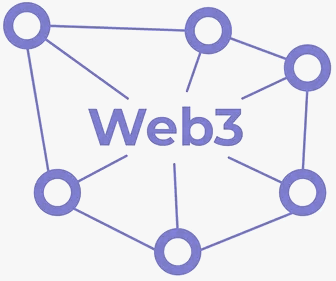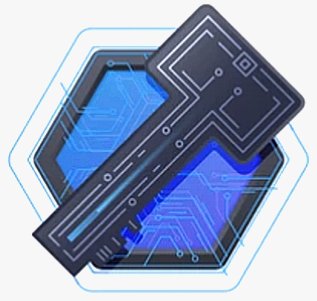Accredited InvestorsAltcoinAnatoli UnitskyAnti-Money Laundering (AML) In CryptoAPIArbitrageArtCoin TokenArticle DirectoryASICAuction Terminology GlossaryBasics of Stock Market InvestingBear MarketBest Crypto Payment Provider In the WorldBitcoinBlockchainBlockchain ConfirmationBlockchain Consensus MechanismBlockchain ForkBlockchain GlossaryBored Ape Yacht ClubBuild a Business That OutperformsBull MarketBuying SkyWay SharesByzantine Fault Tolerance (BFT) ExplainedCasascius CoinCentral Bank Digital Currency (CBDC)Centralized Crypto ExchangeCoinCoinsetCold WalletCollateralCommodity Futures Trading Commission (CFTC)Cross-Chain TechnologyCRUCrypto ExchangeCrypto GlossaryCrypto JokesCrypto Terms to KnowCrypto TickerCryptocurrencyCryptographyCryptojackingCryptounit BlockchainCryptounit GlossaryCryptounit ProgramdApp (Decentralized Application)Dead CoinDecentralized Exchange (DEX)Decentralized Finance (DeFi)Difference Between Bitcoin and EthereumDifferent Ways of Investing MoneyDigital CurrencyDistributed LedgerDo Your Own Research (DYOR)Dollar Cost Averaging (DCA)Dow Jones Industrial Average (DJIA)EncryptionERC-20ERC-721EthereumEvoScentFear Of Missing Out (FOMO)Fear, Uncertainty and Doubt (FUD)Fiat MoneyFNT Fintech CompanyGenesis BlockGlobal Unit PayGlossary of Banking TermsGlossary of Business TermsGlossary of Financial TermsHalvingHODLHot WalletHow Do I Start InvestingHow Rich is Satoshi Nakamoto?How to Create a BlockchainHow to Find Private InvestorsHow to Get Into FintechHow to Program Smart ContractsI Am Thrilled to Be a Part of This Global ProjectInitial Coin Offering (ICO)Initial Public Offering (IPO)Initial Token Offering (ITO)Innovation Basalt TechnologyInnovative Transportation TechnologiesInternational Bank Account Number (IBAN)Investing in Gold Mining StocksInvesting in Gold MiningJagerJoy of Missing Out (JOMO)Know Your Customer (KYC)LedgerLiquidity in CryptocurrencyMaker and Taker Fees in Crypto TradingMarket Capitalization (Market Cap)Meme CoinMetal Credit CardMetaMaskMillenials Now Have Access to Generational WealthMy Best Investment EverNew Digital EvolutionNFT GlossaryOff-Chain TransactionsOn-Chain TransactionsOpen Edition NFTPeer-to-Peer (P2P)Personal Loan GlossaryProbably the Best STO on the MarketProof of Stake (PoS)Real Estate Glossary of TermsReal Estate Investing GlossaryRebase TokenSecurities and Exchange Commission (SEC)Security Token ExchangesSecurity Token Offering (STO)Soulbound Decentralized Identities for Security TokensSoulbound ID Launch by Stobox Proves a SuccessSoulbound TokensStoboxStock Market GlossaryTestimonialsTether Platform and Token (USDT)UnitEx ExchangeUnitsky String TechnologiesUNTBUSDUValidatorWe Started Investing When We Were 25What are Blue Chip NFT?What are Blue Chip Stocks?What are Crypto Assets?What are Crypto Smart Contracts?What are CryptoPunks NFT?What are Digital Assets?What are Digital Collectibles?What are Gas Fees?What are Gas Wars?What are Hashmasks?What are Non Fungible Tokens?What are Non-Sufficient Funds (NSF)?What are Soulbound Tokens (SBT)?What are Stablecoins in Crypto?What are Transactions Per Second (TPS)?What are Utility NFTs?What are Utility Tokens?What Does Burning Crypto Mean?What Does Diamond Hands Mean?What Does Paper Hands Mean?What Does To The Moon Mean?What Does WAGMI Mean?What Happened to Satoshi Nakamoto?What is a 51% Attack?What is a Baby Boomer?What is a Backlink?What is a Banner?What is a Barcode?What is a Bid-Ask Spread in Crypto?What is a Block in Blockchain?What is a Block Reward?What is a Blockchain Address?What is a Blockchain Node?What is a Blockchain Oracle?What is a Blog?What is a Bond?What is a Bot?What is a Broker?What is a Business Accelerator?What is a Cash Cow?What is a Commercial Bank?What is a Commodity?What is a Con?What is a Credit?What is a Credit Limit?What is a Credit Rating?What is a Crypto Airdrop?What is a Crypto Bridge?What is a Crypto Scam?What is a Crypto Token?What is a Crypto Wallet?What is a Crypto Whale?What is a Crypto Winter?What is a Cryptocurrency Public Ledger?What is a Cryptocurrency Roadmap?What is a DAO?What is a Dark Pool?What is a Day Trader?What is a Dead Cat Bounce?What is a Default?What is a Derivative?What is a Digital Credit Card?What is a Fiscal Quarter?What is a Fungible Token?What is a Governance Token?What is a Grace Period?What is a Hard Fork?What is a Hot Wallet?What is a Hybrid Blockchain?What is a Hybrid PoW/PoS?What is a Joint Account?What is a Market Cap?What is a Merkle Tree in Blockchain?What is a Mining Farm?What is a Nonce? What is a PFP NFT?What is a POS System?What is a Prepaid Card?What is a Private Blockchain?What is a Private Key?What is a Public Blockchain?What is a Public Key?What is a Reserve Currency?What is a Ring Signature?What is a Routing Number?What is a Rug Pull in Crypto?What is a Safe Deposit Box?What is a Satoshi?What is a Security Token?What is a Seed Phrase?What is a Shitcoin?What is a Sidechain?What is a Soft Fork?What is a Spot Market?What is a State Bank?What is a SWIFT Code?What is a Tax Identification Number (TIN)?What is a Time Deposit?What is a Transaction Account?What is a Variable Interest Rate?What is a Virtual Assistant (VA)?What is a Virtual Card?What is a Virtual Currency?What is a Visa Card?What is a Whitelist in Crypto?What is a Whitepaper?What is Accounts Payable (AP)?What is AMA in Crypto?What is Amortization?What is an Accrual?What is an ACH Transfer?What is an Actuary?What is an Addendum?What is an Algorithm?What is an Angel Investor?What is an Annuity?What is an Asset?What is an ATM?What is an Atomic Swap?What is an Audit?What is an Avatar?What is an EIN?What is an Embargo?What is an Entrepreneur?What is an IDO (Initial Dex Offering)?What is an Interest Rate?What is an Internet cookie?What is an Investment Bank?What is an NFT Drop?What is an NFT Floor Price?What is an Ommer Block?What is an Orphan Block?What is an Outstanding Check?What is an Overdraft?What is Artificial Intelligence (AI)?What is B2B (Business-to-Business)?What is B2G (Business-to-Government)?What is Bartering?What is Bitcoin Dominance?What is Bitcoin Pizza Day?What is Blockchain Immutability?What is Blockchain Used For?What is BRICS?What is Business-to-Consumer (B2C)?What is C2C (Customer to Customer)?What is Capitalism?What is Catfishing?What is CFD Trading?What is Check Kiting?What is Cloud Mining?What is Communism?What is Content Marketing?What is Decentralization in Blockchain?What is DeFi in Crypto?What is Delisting?What is Depreciation?What is Digital Marketing?What is Diversification?What is Double Spending?What is Dumb Money?What is Dumping?What is Earnings Per Share (EPS)?What is Economics?What is Email Marketing?What is Equity?What is Etherscan?What is Fintech?What is Foreign currency?What is Forex?What is Fundamental Analysis (FA)?What is GameFi?What is Generative Art NFT?What is Gwei?What is Hard Currency?What is Hash Rate?What is Hashing in Blockchain?What is Inflation?What is Initial Game Offering (IGO)?What is Interest?What is Interest Income?What is Mainnet?What is Mastercard?What is Metaverse in Crypto?What is Mining in Cryptocurrency?What is Minting NFT?What is Mobile Banking?What is Money Laundering?What is NFT Alpha?What is NFT Metadata?What is NFT Rarity?What is NGMI Meaning?What is Nominal Interest Rate?What is Online Banking?What is Open-End Credit?What is OpenSea NFT Marketplace?What is Personal Identification Number (PIN)?What is Play-to-Earn?What is Polygon?What is Proof of Authority (PoA)?What is Proof of Work (PoW)?What is Public Key Cryptography?What is Pump and Dump?What is Quantum Computing?What is Refinancing?What is Retail Banking?What is Ripple?What is Sharding?What is Slippage in Crypto?What is Smart Money?What is Solvency?What is Soulbound ID?What is SSL?What is Staking in Cryptocurrency?What is Technical Analysis (TA)?What is Testnet?What is the Ask Price?What is the Better Business Bureau (BBB)?What is the Bid Price?What is the Dark Web?What is the InterPlanetary File System (IPFS)?What is the Gold Standard?What is the Lightning Network?What is the Prime Rate?What is the Sandbox?What is the Secondary Market?What is the World Bank?What is Tier 1 Capital?What is Tokenomics?What is TRC-20?What is Universal Banking?What is Unspent Transaction Output (UTXO)?What is Usury?What is Volatility in Crypto?What is Wash Trading?What is Web3?What is Whisper?What is XRP?What is Zero-Knowledge Proof (ZKP)?Who is Beeple?Who is Satoshi Nakamoto?Who is Vitalik Buterin?Why Tokenization is a Safe HavenWhy You Should Try Your Hand at Trading
What Is Whisper?
- Home
- Blockchain Glossary
- What Is Whisper?
Web3 represents a decentralized shift in the World Wide Web, with the aim of replacing centralized web applications with decentralized applications (dApps) implemented on a trusted peer-to-peer (P2P) network, free from central points of control and failure.

In the Ethereum ecosystem, this vision is realized through three key pillars, one of which is the Ethereum Whisper protocol. This secure and decentralized messaging protocol plays a crucial role in enabling the emergence of dApps, and ultimately the Web3 vision.
The first pillar of Web3 is smart contract technology, which is executed on the Ethereum blockchain as a trusted immutable backend. With smart contracts, the code of the dApp is run on a trusted P2P protocol, rather than a centralized web server. Decentralized storage, the second pillar, is provided by Swarm. This allows off-chain components of dApps, such as web interfaces and large data sets, to be stored in a decentralized manner, without reliance on centralized file storage or databases.
Whisper, the third pillar of Web3 is privacy-focused secure messaging. DApps often require communication through a message bus that operates outside the context of blockchain transactions. Message buses enable point-to-point or broadcast messaging among applications or users. Centralized message servers have traditionally facilitated this, but dApps need off-chain communication for reasons such as privacy, time-limited validity of messages, and transaction costs.
What Is Whisper?
Ethereum Whisper is a messaging protocol that enables nodes on the Ethereum network to send and receive messages. The messages can be used for a variety of purposes, such as peer-to-peer communication, decentralized chat applications, and real-time updates for dApps.
Whisper uses a decentralized architecture to provide secure and private communication between nodes. Unlike traditional messaging protocols, Whisper does not rely on centralized servers to handle message transmission. Instead, messages are distributed across the network in a peer-to-peer fashion, making it difficult for third parties to intercept or censor communication.
How Does Ethereum Whisper Work?
Whisper uses a distributed hash table (DHT) to store and distribute messages across the Ethereum network. When a node wants to send a message, it first encrypts the message using the recipient's public key. The encrypted message is then hashed and added to the DHT. Nodes on the network can retrieve the message by searching for the hash in the DHT.
To ensure privacy, Whisper messages are routed through a series of randomly selected nodes before reaching their final destination. This means that even if an attacker is able to intercept the message, they will not be able to determine the identity of the sender or recipient.
Whisper also provides a number of additional features, such as message filters and topics. Filters allow nodes to specify the type of messages they want to receive, while topics enable nodes to subscribe to specific channels of communication.
Why Is Ethereum Whisper Important?
Ethereum Whisper is an important part of the Ethereum ecosystem because it enables secure and decentralized communication between nodes on the network. This is essential for the development of decentralized applications (dApps) that rely on real-time communication.
For example, decentralized exchanges (DEXs) use Whisper to provide real-time updates on trading activity. Without Whisper, DEXs would need to rely on centralized servers to handle communication, which would introduce a single point of failure and compromise the security of the platform.
Whisper is also important for the development of decentralized chat applications. These applications allow users to communicate with each other without relying on centralized messaging services. Whisper provides a secure and private way for users to communicate, without the risk of censorship or surveillance.
The Bottom Line
Whisper is a messaging protocol that enables secure and decentralized communication between nodes on the Ethereum network. It is an important part of the Ethereum ecosystem, enabling the development of decentralized applications and chat services that prioritize security and privacy.
Related Articles

dApp
Decentralized Applications (dApps) are a new type of software application that is rapidly gaining popularity due to its unique features and benefits. Unlike traditional applications, dApps are...

What is Web3?
Web3, also known as the decentralized web, is a new paradigm for the Web that aims to address these issues. At its core, Web3 is a network of...

Decentralized Exchange (DEX)
Smart contracts are the foundation of a decentralized exchange. They use liquidity pools to allow token holders to lock their cryptocurrencies into DEX to facilitate trading orders while...

Ethereum
With its powerful smart contract capabilities and robust ecosystem, Ethereum has sparked the imagination of developers, businesses, and investors alike. In this article, we will delve into the world of Ethereum and explore its key features and potential.

What is a Public Key?
The public key is created using asymmetric key cryptographic algorithms in public key cryptography. Public keys are used to encode data in an unreadable form. Decryption is performed with a unique but...

What is Hashing in Blockchain?
Hashing is the process of taking an input (also known as a message) and converting it into a fixed-size output, also known as a hash value or digest. The hash function performs this conversion, which is...
- Home
- Blockchain Glossary
- What Is Whisper?